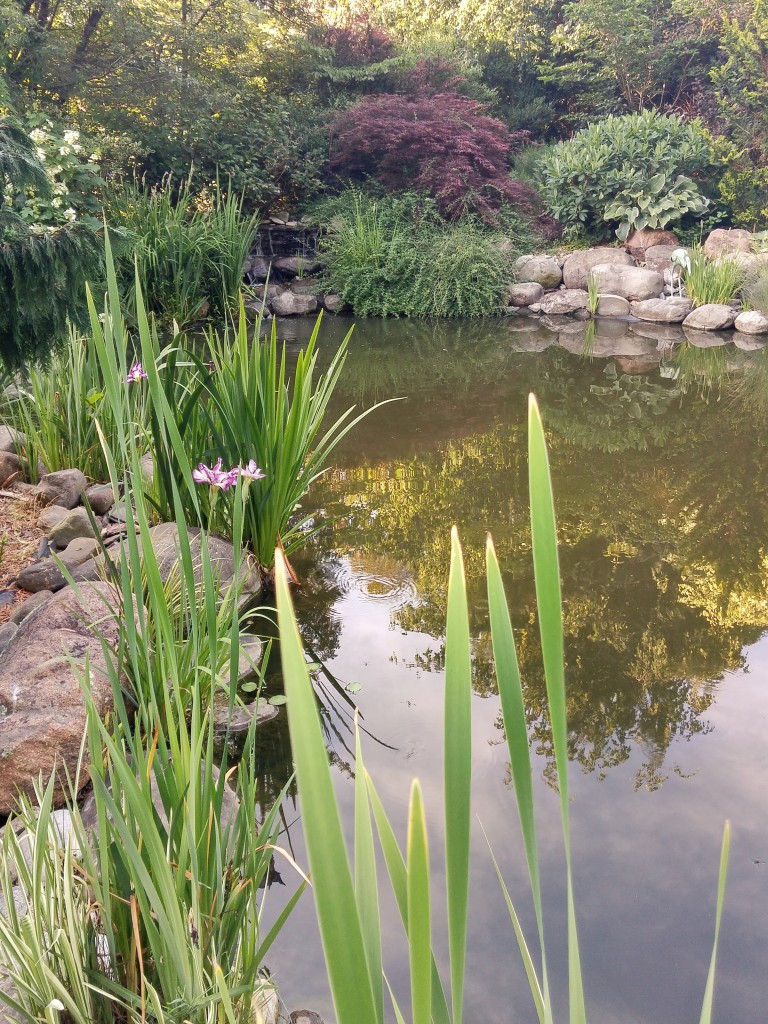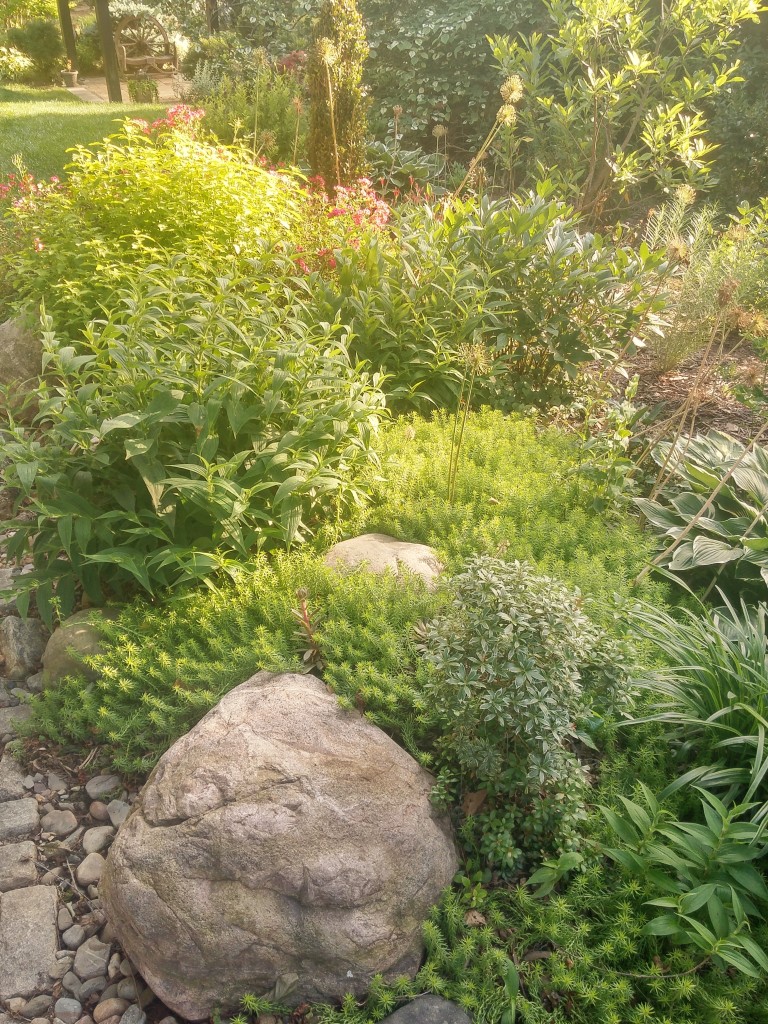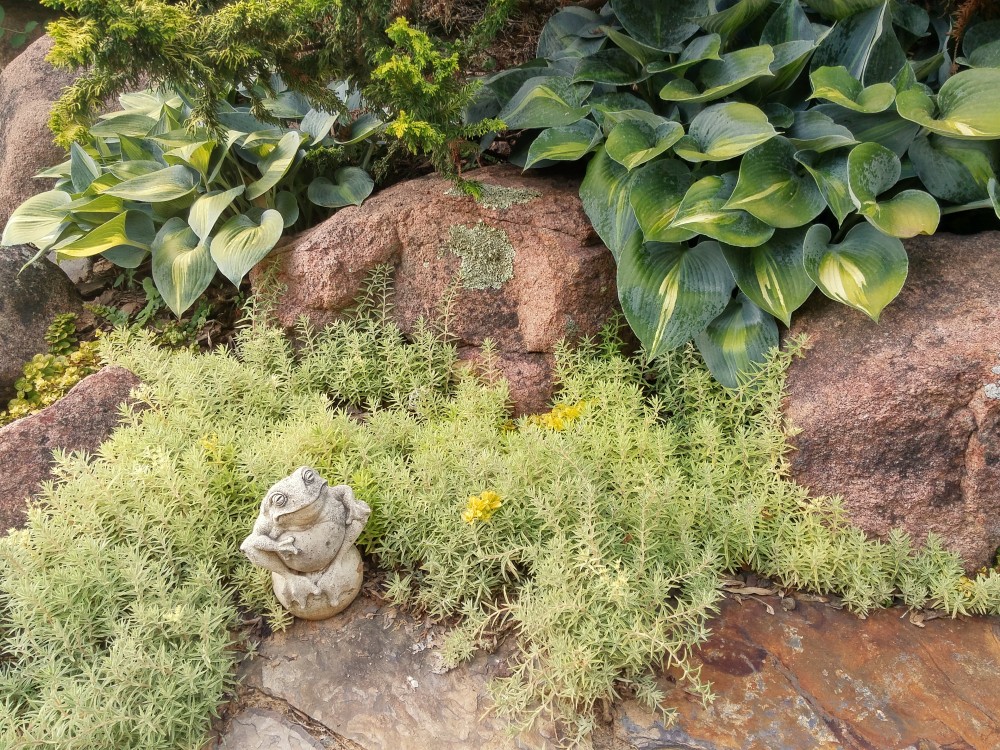Perhaps someday, the garden will be complete. After twenty-seven years, much of the property is covered by ponds (below) and plantings, but the gardener’s work is never done, it seems, and much remains to be done along the edges. If all goes well, in another decade the garden should be perfectly satisfactory, though setbacks are to be expected.

With small exceptions, if time could be stopped, I would take the garden as it is today, before the next summer squall or winter storm wreaks havoc. Over three decades, substantial trees have been lost to wind and ice, and a portion of the rear garden has seemingly sunk so that it is constantly damp. Though storm damage is always disappointing, the opportunity to add new plants was not such a bad thing, and I’m more pleased with the after than the before. But, I’m not anxious to undertake further renovations. Now, I’m content to piddle around the edges, and a few areas that were reworked need a bit of growing in before they’re just right.

As the garden has matured, I find the areas I’m most pleased with require almost no care to maintain. These have small trees, often underplanted with shrubs or perennials, with the ground covered so that weeds (and weeding) are minimized. Not only is the look more complete, the areas require little labor. As I get older and lazier, this is more of a priority than it once was.

Beside the driveway three tall hornbeams have been lost in recent years. The replanting of this area (above) is nearly complete, but as trees have grown and much of the garden has become more shaded, the opportunity to plant in part sun has been welcomed. I’ve been conscious (for once) not to plant trees that will overgrow to shade this area, though now I’m considering a few small growing Japanese maples that will complete the picture as I envision it. 
In the swampy area at the back corner of the rear garden, a large witch hazel and holly were lost, and the replanting is a few years from being where I’d like it. But, progress is in the works. Native buttonbush (Cephalanthus occidentalis), Virginia sweetspire (Itea virginica), and chokeberry (Aronia melanocarpa) are just getting started, but they’re happy in the constant dampness and beginning to fill in along with Japanese irises (Iris ensata) that have spread through the standing water from a spring that was once almost dry, but has rejuvenated in recent years. I’m still planting a bit of this and that to determine which plants will cover the ground to keep weeds down, while also avoiding ones that might get out of hand.
I am curious what plants do you like for ground covers to keep weeds down? after 4 million helicopters fell from the sugar maple…even more interested. I have sweet woodruff groundcover which I like but I would love to hear some other suggestions. love your blog and your gardens!
I sympathize. In the few areas without ground covers, I’m now working to pluck 14 million red maple seedlings (a conservative estimate). At my current pace I’ll have things cleaned up in July 2018. Long in the past I planted several varieties of ivy and periwinkle, and despite falling from favor in recent years, both do an excellent job keeping weeds down. I’ve planted dozens of groundcovers, including hostas, dwarf mondo grass, the native wild geranium, toad lilies, sweetbox, various sedums, Creeping Jenny, and more. Some hug the ground while others grow a foot or fifteen inches tall, but all shade the ground so weed seeds are less likely to grow.
I felt so bad ripping out a million tree seedlings, but I have no clue where to put a little nursery. I put in a 6 ft redbud (from meadows farms of course) and the fluctuating weather from monsoon to arid desert has caused all the leaves to burn up. Do you have any rescue tips? It is still alive but certainly not kicking.
Unfortunately, many plants did not fare well in the transition from three weeks of rainy, cool weather, to warm and dry. This is likely the problem with the redbud, and the only remedy is to continue to water when we go through a dry period of five or six days. You should never need to water more than twice a week.It is unlikely that you will see substantial growth for the remainder of the year, but if some live leaves remain the tree will survive until spring.
Such true words that a gardeners work is never done. I am curious on what is creeping jenny. We have a plant here that we use the name for, but it is a terrible noxious weed that chokes everything in sight. I am thinking those are different plants, and I may be using the wrong name for the weed I have in my area. Lovely pictures!!
Creeping Jenny is Lysimachia nummularia ‘Aurea’. It grows with mixed success in damp areas, where is it most successful, and dry, where it can flourish if the sun/shade mix is right. Of all ground covers in this garden, Creeping Jenny is the poorest for inhibiting weeds, but its bright yellow foliage is a colorful backdrop.
OK, so not the weed we use that name on. I may have to investigate what we have misnamed.
Absulutly beautiful. I am at the beginning stage of your adventures … New pond/ creek and bog. Planting seems to be the most difficult thing. I love getting I spectating from your blog. Thank you!!
Your gardens are beautiful!! I’m at the beginning of your adventure, having just put in a new pond/ bog and creek.
I love getting inspiration from your blog. Thank you!!
Beautiful garden!
Lovely!